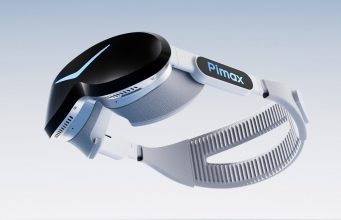
Pimax issued an update detailing its upcoming fleet of micro-OLED PC VR headsets, which also included info on a delay affecting its thin and light headsets, Dream Air and Dream Air SE.
The update, seen at the bottom of the article, details three products Pimax is preparing to ship:
- Dream Air – Thin and light PC VR headset containing Sony Micro OLED panels (3,840 × 3,552 pixels per eye) and concave-view pancake optics, delivering 110° horizontal FOV, eye-tracking, auto-IPD adjustment, spatial audio, and DisplayLink.
- Dream Air SE – Lower resolution version of Dream Air containing Sony Micro OLED panels (2,560 × 2,560 pixels per eye) and all of the above.
- Crystal Super (Micro OLED Engine) – A new swappable optical module for Pimax’s flagship Crystal Super, serving up to 116° horizontal FOV with the same panels and lenses as Dream Air.
Pimax announced Dream Air last December, which was set to serve up competition to thin and light PC VR headsets like Bigscreen Beyond and Shiftall MaganeX Superlight 8K. While launch was initially planned for May 2025, the headset was subsequently delayed to Q3 2025.
Now, Pimax says both the SteamVR tracking versions of Dream Air and Dream Air SE, the latter of which was announced in May, are scheduled to ship sometime in December.
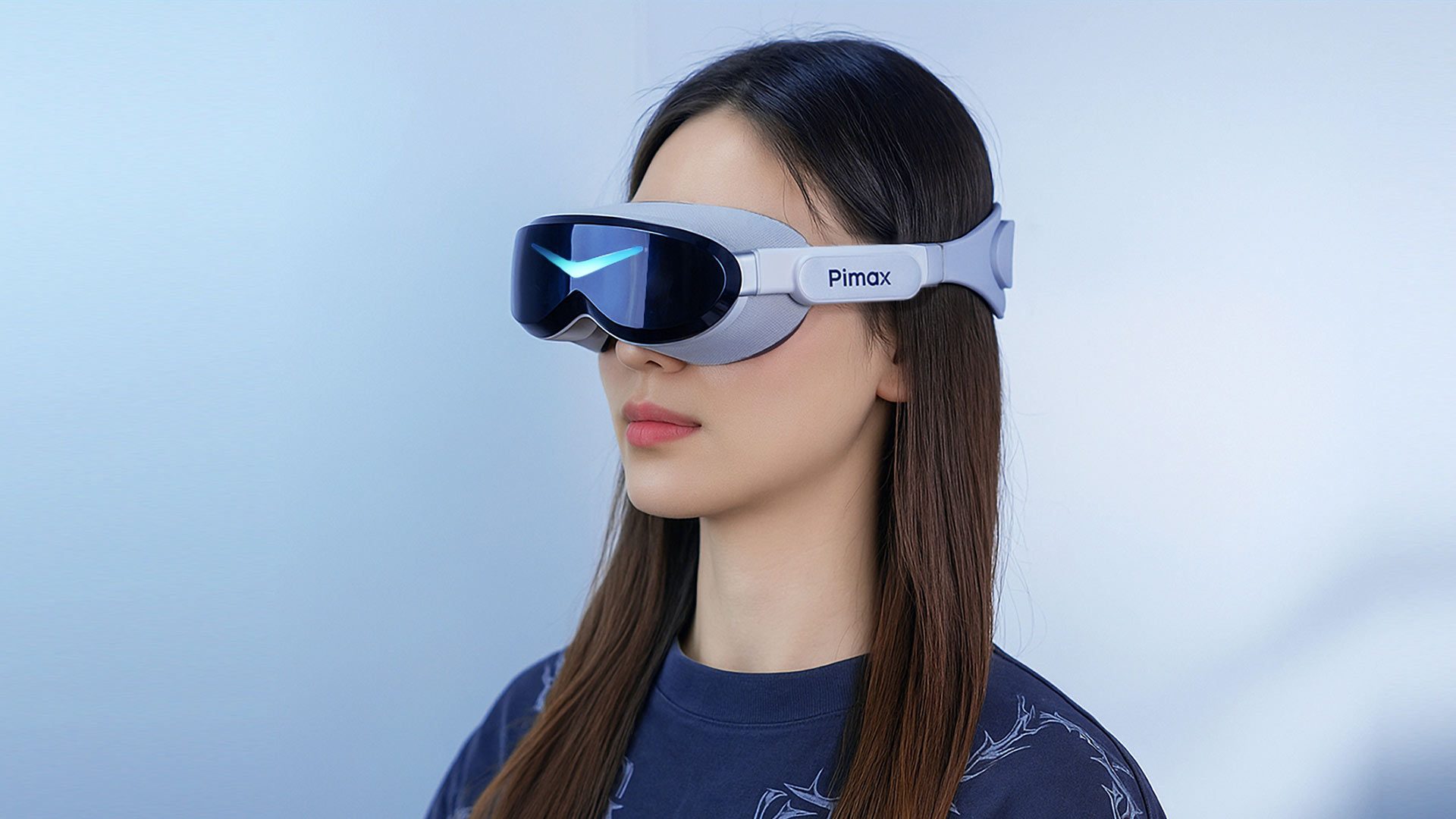
While the SteamVR tracking version (aka ‘Lighthouse’) are shipping this year, Pimax is offering SLAM versions of both headsets, which don’t require external base stations. The SLAM variants are said to start an “external beta test” in December—so no word on when those ship just yet.
As for Crystal Super’s new swappable micro-OLED optical module, a version of the headset containing the module will start shipping in October. There’s no mention of whether that also means prior Crystal Super owners will be able to purchase the module by itself in that time frame.
Check out all the specs, price and release date info Pimax announced during its big update below:
Note: Pimax breaks up its pricing structure with an upfront cost of around 60% of the final price. The remainder is paid as a software fee that gives users unlimited access to Pimax Play, which is offered in a 14-day trial. Pimax Play is required for the headset to work.
Pimax Dream Air Specs
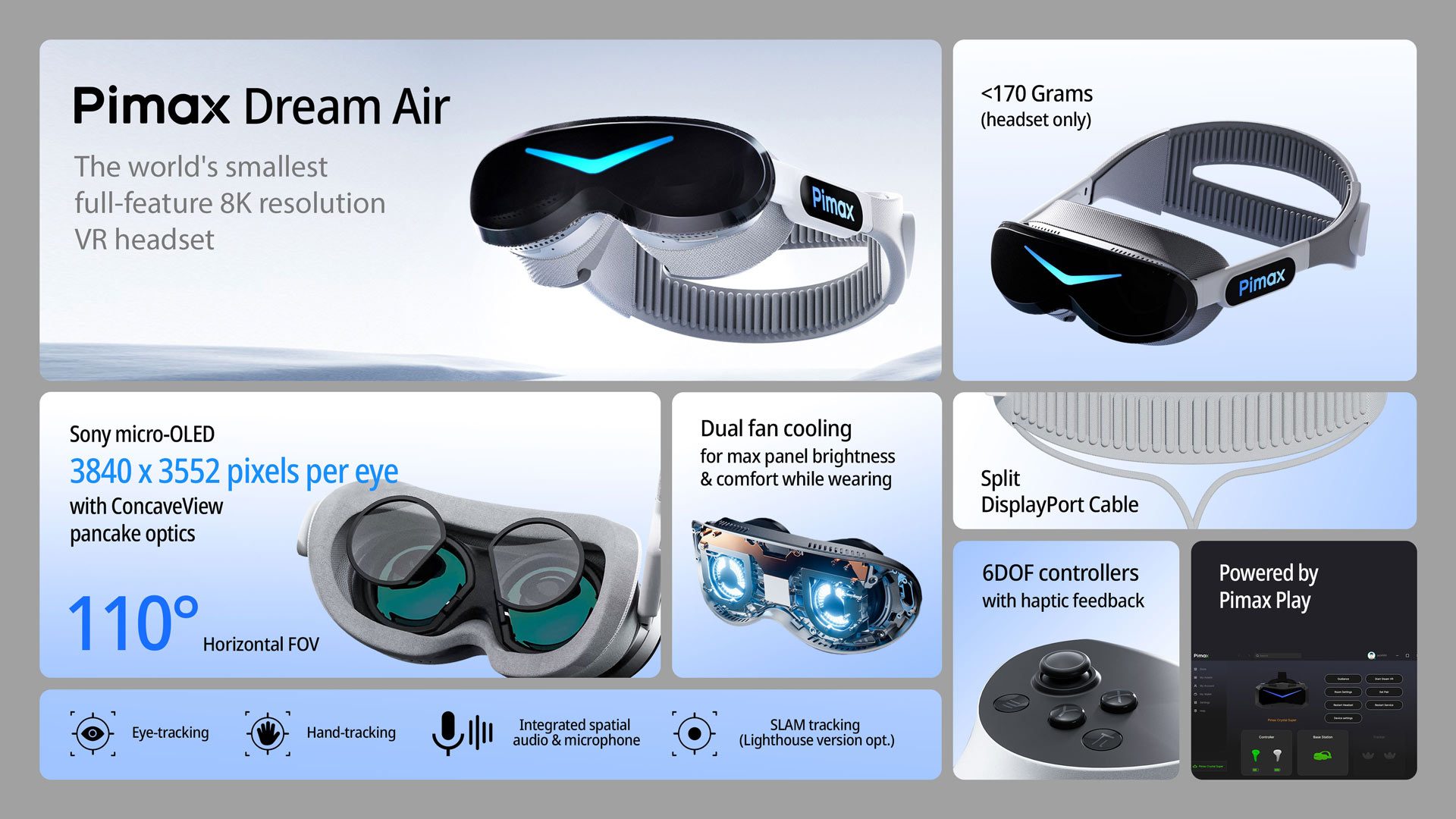
- Display: Sony Micro-OLED screen (3840 × 3552 pixels per eye)
- Optics: 110-degree horizontal FOV with Pimax’s ConcaveView optics
- Weight: <170 grams>
- Features:
- DFR-ready eye-tracking
- Hand tracking
- SLAM tracking or Lighthouse tracking
- 6DOF controllers
- Integrated spatial audio
- Dual fan for proper cooling
- Powered by Pimax Play
- Split DisplayPort Cable
- Price: $1,999 for SteamVR tracking version (shipping in December), $2,299 for SLAM tracking version (beta testing in December)
Pimax Dream Air SE Specs
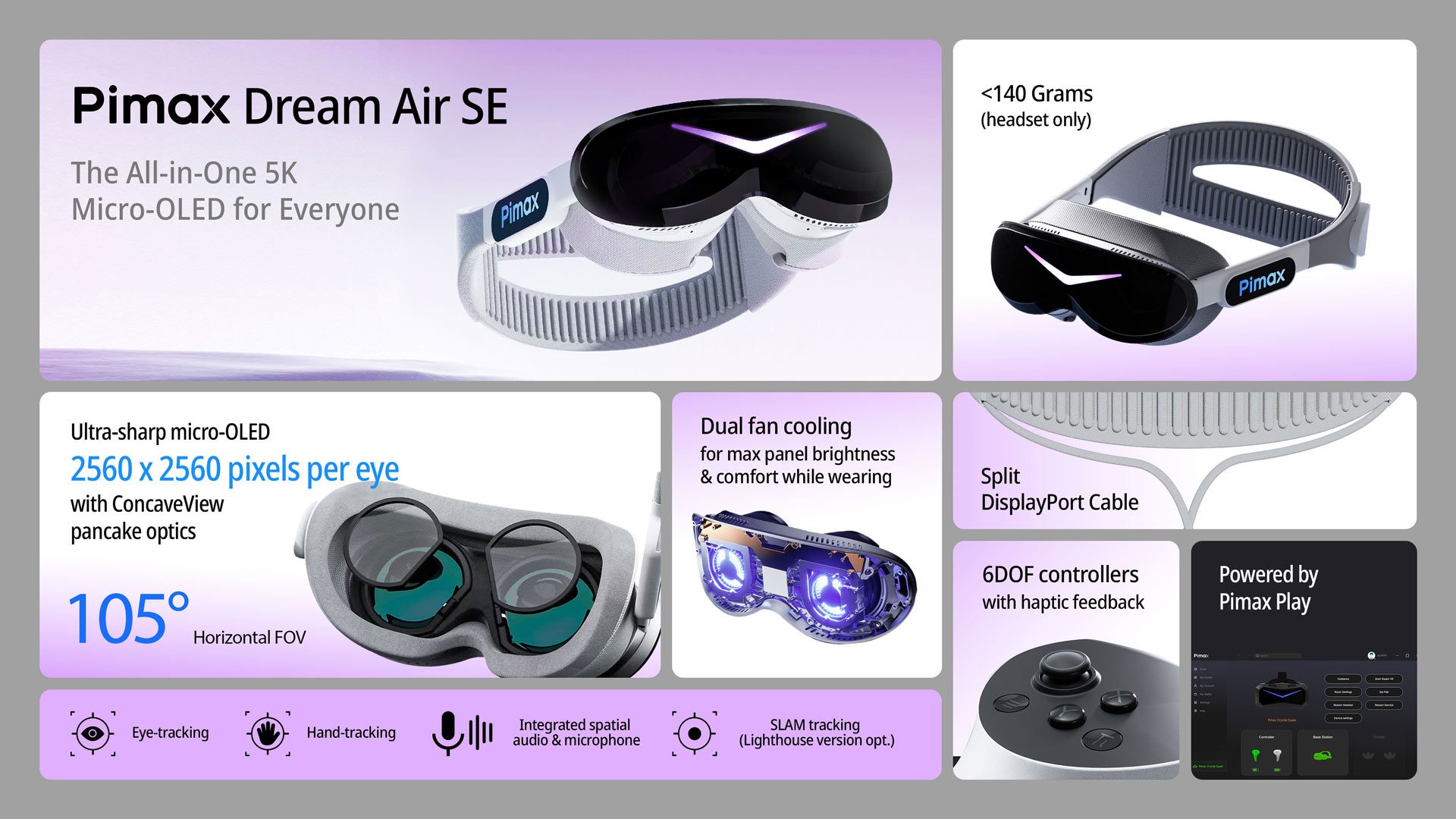
- Display: Sony Micro-OLED screen (2,560 × 2,560 pixels per eye)
- Optics: 105-degree horizontal FOV with Pimax’s ConcaveView optics
- Weight: <140 grams>
- Features:
- DFR-ready eye-tracking
- Hand tracking
- SLAM tracking or Lighthouse tracking
- 6DOF controllers
- Integrated spatial audio
- Dual fan for proper cooling
- Powered by Pimax Play
- Split DisplayPort Cable
- Price: $899 for SteamVR tracking version (shipping in December), $ 1,199 for SLAM tracking version (beta testing in December)
Crystal Super Micro-OLED Specs
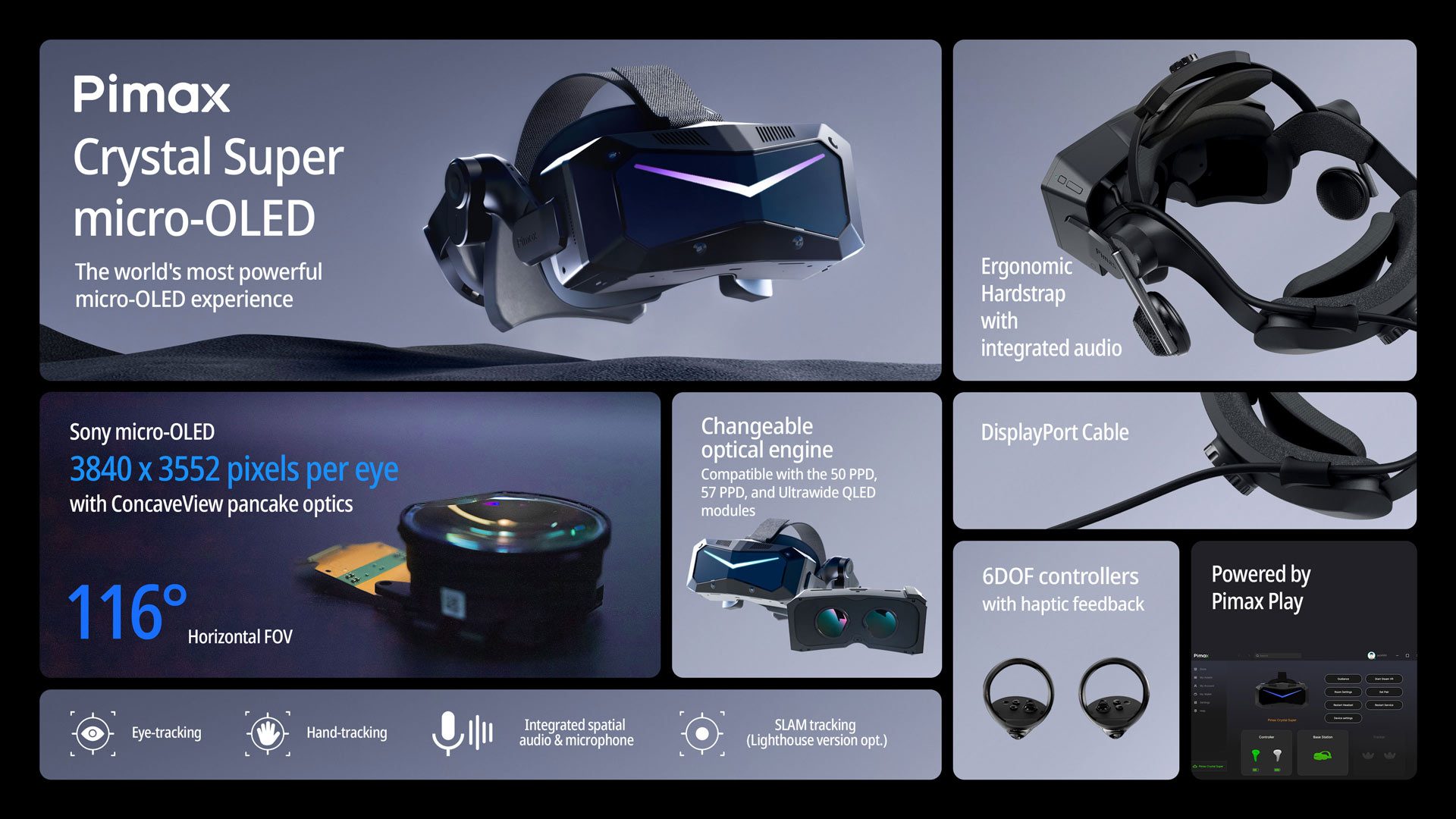
- Display: Sony Micro-OLED screen (3840 × 3552 pixels per eye)
- Optics: 116-degree horizontal FOV with Pimax’s ConcaveView optics
- Weight: ?
- Features:
- DFR-ready eye-tracking
- Hand tracking
- SLAM tracking (Lighthouse optional)
- 6DOF controllers
- Integrated spatial audio
- Dual fan for proper cooling
- Powered by Pimax Play
- Split DisplayPort Cable
- Price: $2,199 for full headset & module (shipping in October)
The post Pimax Delays Dream Air and Dream Air SE to December, SLAM Versions Likely to 2026 appeared first on Road to VR.